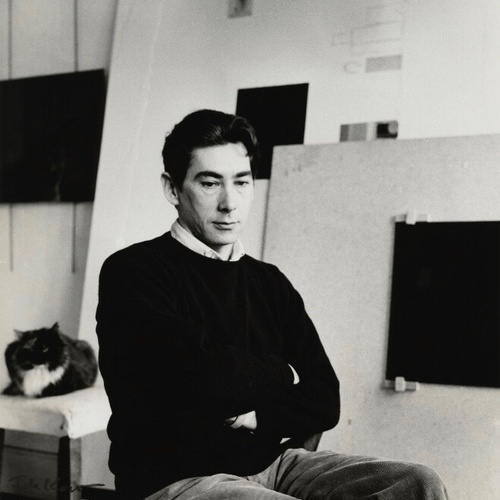David Tindle b. 1932
"The images I paint are of things that I know or can remember best. I try to place them in an order that expresses the feelings I have about them. It is not a question of painting them as realistically as I can, but to get the right tonality, so that memory and presence are very close."
David Tindle, 1985
David Tindle RA is among the most renowned British figurative painters of his generation.
Born in Huddersfield in April 1932, he held his first exhibition in London at only nineteen years old, and from that point, his career and reputation quite rapidly developed. In London, Tindle befriended a circle of artists that included Francis Bacon, John Craxton, Lucian Freud, John Minton and Keith Vaughan. All were older than him, and very much established. The example they provided, as serious and committed painters, proved important to Tindle's own sense of himself as an artist. Several of his peers - Bacon, Freud and Minton certainly - influenced his work technically and stylistically, as can be seen in Tindle's paintings from the 1950s and 1960s.
For the first two decades of the Artist's career, his painting was in transition, as he moved gradually towards a more crisp articulation of form coupled with a more restrained handling of paint. Then, in the early 1970s, he began to use the painstaking technique of traditional egg tempera, in paintings that were noticeably more detailed than his previous work in oils. Among the earliest of Tindle's tempera paintings is a portrait of his son, 'John' (1973), though the Artist went on to produce further portraits, landscapes and still life paintings in the medium. These are often intensely detailed, and the products of many hours intensive work.
Certain subjects and motifs recur in Tindle's work: windows, doorways, mirrors and screens, forming pictures within pictures. They provide a subtle theatricality, one that 'toys with the idea of realism' as the Artist has stated.
Amongst Tindle' s most eminent portrait commissions was to paint the actor Dirk Bogarde for the National Portrait Gallery in 1985, for which Bogarde sat over several days at his house in the South of France.
The changes in Tindle's personal life have over the years been reflected in his work. He has married three times, and has nine children - and has lived variously in England, France and Italy, where he currently resides. Depictions of domestic settings and gardens form what amounts to an autobiography, in works that are imbued with a sense of time and its passage. Tindle has lived in Tuscany for the past two decades, a move that followed an eight-year period in France. The light in Italy has affected his colour, for it is he says more luminous, and at times becomes tinged with red, yellow or blue, in ways one only notices gradually over time. The change in his palette is particularly apparent in paintings of the local architecture, in which walls and rooftops are often seen framed within the studio window. There is also a difference in treatment evident in many of these works, containing as they do areas painted in softly nuanced layered washes combined with built-up layers of small marks.
In more recent years the work has often taken on a different kind of autobiographical narrative, in which an underlying sense of the surreal, subtly evident since early on in the Artist's work, has become more explicit. The imagery is often dreamlike, symbol-laden and allegorical, as he comes to terms with age and with memories and thoughts of past and present relationships.
With thanks to Ian Massey.

